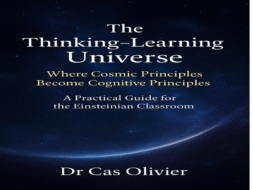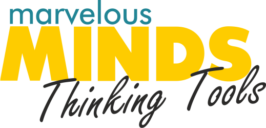Read this blog together with From Mimicry to Mastery: Building a Hybrid F1 Thinking Brain with Mirror Neurons and Thinking Tools
Study methods lead to cognitive train smash
There are several key reasons why traditional study methods don’t work:
- Study methods imply, amongst other, that importtant stes of informaton must be highligthed which is a passive process and at a specific point in time everthing seems inportant.
- Changing highlighter colours is time consuming - time that could be used for figuring out.
- The brain is not able to think in colours, which makes it a fruitless process. It is not possible for the brain to recall yellow highligted text accross all subjects.
- Study methods train the brain to compress content, not build meaning.
- The brain is wired to expand connections, not reduce them—so there's a mismatch.
- Exams demand expansive thinking, but the brain has been trained for compression—leading to a cognitive breakdown.
- During exams, the executive function relies on memory, which is shallow, so it fails—resulting in cognitive fibrillation.
Most learners study hard.
They highlight, summarise, reread, and rewrite.
They try their best.
But when the exam comes, it all falls apart.
❓“I knew the work, but I couldn’t answer the questions.”
❓“It looked familiar, but I didn’t know what to do.”
❓“I studied for hours, but still failed.”
These aren’t excuses. They’re symptoms of a deeper problem.
Let’s get honest:
Most traditional study methods train the brain to do the opposite of what the exam requires.
🎯 What Is the Purpose of Traditional Study Methods?
✅ Traditional study methods aim to make content smaller/less
- Summaries reduce detail.
- Highlighting shrinks focus.
- Repetition compresses thinking into habits.
These methods prepare the brain to store and recall. This notwithstanding the fact that the brain is NOT wired for storing and recalling.
Not to rebuild, connect, or create.
Learners are trained to compress knowledge—not expand it.
🧠 But Is the Brain Wired to Make Things Smaller?
No. That’s the mismatch.
The brain is not a filing cabinet.
It is a pattern-builder, meaning-maker, and relationship engine.
It’s wired to:
- Make connections
- Expand patterns
- Simulate meaning
- Construct structure
- Ask "why" and "how," not just "what"
While traditional study methods shrink learning, the brain on the other hand is designed to build it out.
Give the brain a single word—like “leaf.”
Instantly, it expands:
🍃 Leaf → tree → seasons → autumn → chlorophyll → photosynthesis → biology class → backyard memories
It doesn’t shrink the meaning. It branches out—literally.
Now try the word “swallow.”
It could mean:
- A bird (sparrow, migration, feathers, flight)
- The action (gulp, throat, medicine, nervousness)
- A symbol (freedom, tattoo, sailor's return)
The brain can’t help but grow the meaning.
Even the simplest word activates networks of associations, memories, images, and contexts.
🧠 The brain doesn’t make less. It makes more.
That’s why study methods that shrink content go against how the brain works.
If we want learners to thrive, we need to scaffold the brain’s expansion, not suppress it.
Thinking Tools do just that—they help learners give structure to the expansion their brain is already wired to do.
💥 And Then Comes the Exam…
Here’s where the train smash happens.
After weeks of compressing knowledge into fragments, keywords, and formulas—
The exam demands the opposite:
- Apply
- Analyse
- Solve
- Explain
- Transfer
- Rebuild in new formats
But the brain, which is now trained in compression mode, doesn’t know how to expand.
So it freezes.
Not because it’s lazy—
But because we trained it for recall, not thinking.
This is exacerbated by how the brain operates under pressure. During exams, the brain shifts into executive function mode—the part responsible for decision-making, problem-solving, and working memory.
But here’s the problem: executive function relies on stored memory to retrieve relevant knowledge, steps, and logic. If that memory was built through shallow, compressed study methods, it simply can’t supply the structure the brain needs.
And when the executive function calls on memory—but memory can’t deliver—
The brain enters cognitive fibrillation.
This is like a heart out of rhythm: mental effort is there, but it’s scattered, frantic, and ineffective. The learner freezes. Not because they didn’t study—but because they were trained to store, not to build.
This is the cognitive train smash: the collapse between compressed learning and expanded performance.
🛠️ What Thinking Tools Do Instead
Thinking Tools don’t shrink thinking.
They structure, develop and expand it.
Thinking Tools enable learners to:
- Organise facts meaningfully
- Build logical relationships
- Compare and evaluate
- Sequence cause and effect
- Reflect on progress and readiness
They activate the brain’s natural wiring for building understanding—
Not memorising scripts.
With Thinking Tools, learners construct knowledge as they go—
So when the exam arrives, they can reconstruct it independently.
This is exactly where Thinking Tools change everything—especially in subjects like mathematics, where learners so often fall into rote methods without true understanding.
Unlike traditional study strategies, Thinking Tools align with how the brain naturally learns: by building, not memorising.
In mathematics, learners are often trained to repeat steps without knowing why those steps work. But maths is not about recall—it’s about relationships, structure, and strategy. Thinking Tools provide the scaffolding needed for the brain to grasp those abstract relationships in a concrete, visible way.
Thinking Tools help learners to:
- Organise and categorise mathematical concepts—distinguishing between types of numbers, operations, or units.
- Allow them to see equivalence and relationships—such as how operations relate (e.g., multiplication as repeated addition).
- Sequence the logic of a process—helping learners understand the steps of solving equations or performing long division.
- Compare methods, formulas, or problem types—developing flexibility in thinking.
- Make it possible to monitor progress, identify where they’re stuck, and become self-regulated problem solvers.
Through these tools, learners aren't just absorbing maths—they’re constructing a mathematical framework in their mind. One they can rely on long after the exam is over.
When a learner thinks through maths rather than mimics it, confidence grows.
Clarity follows. And competence becomes independent.
🔁 Final Insight: We’ve Been Barking Up the Wrong Tree
The real problem isn’t that learners aren’t trying hard enough.
The problem is what they’ve been taught to do with their effort.
We tell them to summarise, highlight, repeat—
But then expect them to transfer, analyse, and solve.
That’s not just unfair. It’s neurologically contradictory.
It’s time to stop trimming thinking down to fit memory—
And start scaffolding thinking up to build meaning.
Thinking Tools are not a study method.
They’re a brain-aligned thinking system—
One that builds learners, not just marks.
Let’s stop the train smash.
Let’s teach learners to expand thinking, not reduce it.
Let’s move from study to strategy.




